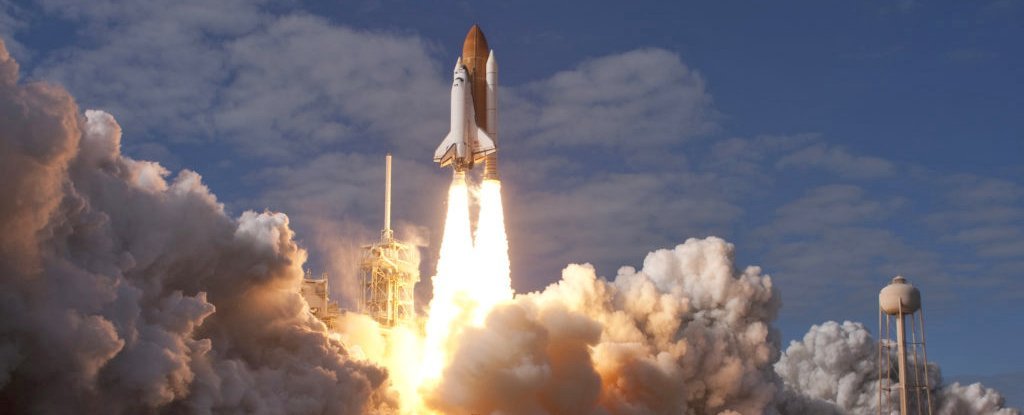
Scientists Track The Secret Sounds of Rocket Launches That Human Can't Hear
Rocket launches are noisy affairs, for sure, but the sounds they produce aren't all audible to the human ear. As rockets leave Earth they generate infrasound, low-frequency sound waves that need special instruments to detect.And scientists have indeed been detecting them. A new study details infrasounds from 1,001 rocket launches, including Space Shuttles, Falcon 9 rockets, Soyuz rockets, the Ariane 5, Russian Proton rockets, and Chinese Long March rockets.These recordings were made using the International Monitoring System (IMS), a network of more than 50 monitoring stations around the world put together as a result of the 1996 Comprehensive Nuclear-Test-Ban Treaty. Built to detect nuclear explosions, the network also works well for detecting rocket launches.You can hear one such launch below the Space Shuttle Atlantis launching from Kennedy Space Center in Florida, on 16 November 2009. Here the sound waves are sped up by 250 times so that they're audible to humans.The instruments used by the IMS are finely tuned enough to identify the individual stages of each rocket launch in some cases though because these rockets travel faster than sound, in the example above you hear the splashdown of the boosters in the ocean before the roar of the take-off.Researchers hope that recordings like this will enable them to assess the success of individual rocket launches and to identify any problems that might have happened along the way. In rocket launches that don't go as planned, infrasonic signatures could help scientists work out why.These infrasound waves can travel very long distances and could be detected by the IMS network even as far away as 9,000 kilometers (5,592 miles). The 1,001 rocket launches were logged as part of 7,637 infrasound signatures captured and analyzed between 2009 and 2020 at the IMS stations.Researchers were able to recognize infrasonic signatures for 733 of the rocket launches, a little over 73 percent. The remainder had thrusts that were too small for them to be identified, or they were launched during atmospheric conditions that didn't allow the sound waves to travel far enough in enough detail.Adrian Peter, a professor of computer engineering and sciences at the Florida Institute of Technology, wasn't directly involved in the study but has studied the infrasonic signatures of rockets before. Peter says it's good to see the IMS being used for other purposes, and that the collected data could have many different applications in the future."Now we're leveraging it for other scientific applications," says Peter. "The ability to detect different types of rockets could be helpful."The research has been published in Geophysical Research Letters.
……Read full article on ScienceAlert
America Space Science
Comments
Leave a comment in Nestia App